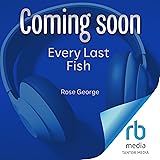Despite the immense popularity of outdoor pursuits, with millions of anglers actively pursuing freshwater fish each year, the unique challenges associated with wild trout fishing and dispersed camping often test even seasoned adventurers. As demonstrated in the accompanying video, unexpected environmental factors—such as encountering ten feet of unexpected snow at an elevation of 9,000 feet by 9 AM—can dramatically alter expedition plans. This scenario underscores the critical need for adaptability and thorough reconnaissance in wilderness environments, especially when navigating diverse landscapes like California’s expansive national forests.
The journey detailed in the video highlights a common narrative: the pursuit of pristine fishing grounds often involves overcoming significant logistical hurdles. Initially thwarted by impassable snow and unsuitable river conditions, the angler’s determination ultimately led to a productive discovery. This pivot from a planned backpacking trip to a convenient, free developed campsite by a bountiful river exemplifies the flexible mindset essential for successful outdoor endeavors. This article delves deeper into the strategies and principles that transform potential setbacks into rewarding experiences, focusing on the intricacies of wild trout fishing, responsible camping practices, and the essential art of outdoor culinary preparation.
Strategic Planning for Wild Trout Fishing Expeditions
Effective planning forms the bedrock of any successful outdoor adventure, particularly when targeting wild trout in remote areas. The initial scouting failure in the video—encountering ten feet of snow by 9 AM—serves as a stark reminder that topographical maps and general weather forecasts may not always reflect localized conditions accurately. Advanced expedition planning should always incorporate multiple layers of intelligence, including current satellite imagery, local ranger station advisories, and recent angler reports.
Mastering Site Selection and Environmental Intelligence
Choosing the right fishing and camping location is paramount for wild trout success. River systems, especially those fed by snowmelt, exhibit significant seasonal variability in flow rates and water temperature. These factors directly influence trout behavior and habitat accessibility. For instance, high, fast-moving water, as initially encountered by the angler, often disperses fish and makes presentations difficult. Conversely, finding calmer eddies or confluence points where water velocity decreases significantly can concentrate trout, making them more accessible to conventional angling techniques.
Furthermore, understanding the microclimates of various elevations is crucial. A location 1,000 feet lower than a snow-bound area, as the angler discovered, can mean the difference between a frozen wasteland and a verdant, accessible campsite. Utilizing elevation data and historical weather patterns helps predict ground conditions more reliably. Moreover, for those driving vehicles like a Honda Civic, assessing road conditions and potential obstacles, such as deeply rutted tracks or unexpected snowdrifts, becomes a vital pre-trip exercise.
Optimizing Your Outdoor Gear for Efficiency and Comfort
While the allure of wild trout fishing often centers on minimalist principles, strategic gear selection significantly enhances comfort and operational efficiency. The video showcases an innovative tent setup, deployed in approximately 40 seconds, which exemplifies the convenience desired for car camping or established campground stays. This rapid deployment capability allows more time for primary activities like fishing and cooking, minimizing labor during camp setup.
Shelter Solutions and Thermal Regulation
For car camping or accessing developed, free campsites like those found in California’s National Forests, a quick-pitch tent offers substantial advantages. These designs often feature integrated pole systems, streamlining the setup process. However, it is equally important to consider the tent’s thermal performance. Experiencing temperatures “below freezing last night,” as mentioned, underscores the necessity for adequate insulation in sleeping bags and appropriate layering systems for personal attire. A three-season tent, coupled with a sleeping bag rated for temperatures well below anticipated lows, becomes indispensable for maintaining core body temperature and ensuring restful sleep in cold conditions.
Essential Angling Equipment for Wild Trout
For freshwater fishing, a simple yet effective tackle setup is often sufficient for targeting wild trout. The angler’s use of a basic rig—three split shots on the line with a nightcrawler—is a highly effective method for bottom fishing in moderate currents. Split shots allow for adjustable weight, enabling the bait to drift naturally near the riverbed where trout often feed. Complementing this, a small spinner lure, as introduced later in the video, offers an alternative for actively searching water columns, particularly in deeper sections where trout might be suspended. The selection of a medium-light action rod with a sensitive tip is ideal for detecting subtle bites from wild trout, which can be notoriously finicky.
The Art of Catch and Cook: From River to Plate
The immediate gratification of catching and cooking your own meal in the wilderness is a deeply satisfying aspect of outdoor adventure. The video perfectly illustrates this ritual, from the excitement of the first catch—a beautiful rainbow trout on the first cast—to the careful preparation and enjoyment of the meal. This practice not only provides sustenance but also fosters a profound connection to the natural environment.
Ethical Harvesting and Fish Preparation
Once a wild trout is caught, swift and humane processing is crucial. The technique of bleeding the fish immediately by running a thumb along the gill plate, as demonstrated, significantly improves the quality and flavor of the meat. This removes blood, which can impart a gamey taste if left in the flesh. Subsequently, gutting the fish promptly prevents bacterial growth and readies it for cooking. The striking orange color of the trout meat, observed in the video, is indicative of a healthy, wild diet, often rich in crustaceans and insects, which contribute to its superior taste and texture.
Mastering Outdoor Culinary Techniques
Outdoor cooking, particularly pan-frying fresh trout, demands a keen understanding of heat management and simple, yet effective, seasoning. The angler’s generous use of butter, coupled with salt and pepper, creates a rich and flavorful crust while keeping the delicate fish moist. Using a small, portable stove with wind protectors, a feature highlighted as invaluable, ensures consistent heat application even in blustery conditions. This particular design detail often distinguishes quality outdoor stoves, offering efficiency that minimizes fuel consumption and cooking time.
When cooking different sized pieces of fish, such as splitting a larger trout in half, it is prudent to cook the thicker portion first, allowing it more time to reach an internal temperature of 145°F (63°C). The absence of bones in the cooked fillet, noted with satisfaction, is a testament to thorough cooking; well-cooked trout often allows the bones to separate cleanly from the flesh, enhancing the dining experience. The simple joy derived from a freshly cooked meal, even without luxuries like lemon, reinforces the essence of wilderness self-sufficiency and the unparalleled taste of freshly harvested food.
Navigating California’s Complex Fishing Regulations
One of the most critical aspects of responsible angling, especially in biologically diverse and heavily regulated regions like California, is a thorough understanding of local fishing regulations. The video’s emphatic warning about the “tons of rules” across various lakes, rivers, counties, and state sections is not an exaggeration. Compliance with these regulations is not merely a legal obligation; it is a fundamental component of conservation and sustainable resource management.
Understanding Catch Limits and Conservation
California’s Department of Fish and Wildlife (CDFW) meticulously crafts regulations to protect fish populations, maintain ecological balance, and ensure equitable access for anglers. The example provided in the video—a limit of two trout per day in the angler’s specific location, contrasted with a more common statewide limit of five per day, or even specific allowances like five plus ten brook trout under eight inches in certain areas—illustrates this complexity. These variations often depend on:
- Species Specificity: Protecting endangered or threatened native trout species.
- Stocking Programs: Differentiating between wild populations and hatchery-stocked fish.
- Habitat Sensitivity: Accounting for areas with delicate ecosystems or critical spawning grounds.
- Seasonal Variations: Implementing closures or special regulations during spawning seasons to ensure population recovery.
Before embarking on any freshwater fishing trip in California, consulting the current CDFW Fishing Regulations Booklet or their official website is imperative. Ignorance of regulations is not a defense, and violations can result in significant fines and loss of fishing privileges. Responsible anglers prioritize obtaining a valid fishing license and strictly adhering to all catch limits, size restrictions, and gear restrictions.
Embracing Dispersed Camping and Wilderness Ethics
The discovery of a fully developed, free campsite within a National Forest, complete with river access and devoid of crowds, represents a significant advantage for budget-conscious and solitude-seeking outdoor enthusiasts. This type of dispersed camping offers a more immersive wilderness experience compared to commercial campgrounds. However, this privilege comes with a heightened responsibility for environmental stewardship.
Principles of Leave No Trace
National Forests often permit dispersed camping, meaning camping outside of designated campgrounds, typically free of charge. While these sites may offer basic amenities like fire rings, they rarely provide services such as trash collection or running water. The angler’s observation that “you pack in what you want and then when you leave, you take everything out” perfectly encapsulates the core principle of Leave No Trace. This comprehensive set of ethics guides responsible outdoor behavior to minimize human impact on natural environments. Key tenets include:
- Plan Ahead and Prepare: Researching the area, packing appropriate gear, and understanding regulations.
- Travel and Camp on Durable Surfaces: Staying on established trails and campsites.
- Dispose of Waste Properly: Packing out all trash, including food scraps, and properly disposing of human waste.
- Leave What You Find: Avoiding altering the natural environment, leaving rocks, plants, and historical artifacts undisturbed.
- Minimize Campfire Impacts: Using established fire rings, keeping fires small, and ensuring they are completely out before leaving.
- Respect Wildlife: Observing animals from a distance and never feeding them.
- Be Considerate of Other Visitors: Respecting solitude and avoiding excessive noise.
Water Purification and Camp Safety
In dispersed camping scenarios, access to potable water is often limited to natural sources like rivers or streams. As demonstrated by the angler boiling river water for ten minutes, purification is essential to eliminate harmful bacteria and pathogens. While boiling is highly effective, other methods like filtration systems (e.g., Sawyer filters, Katadyn) or chemical treatments (e.g., iodine tablets, chlorine dioxide) offer lighter, faster alternatives for ensuring safe drinking water. Having a thermos to keep warm fluids, especially when overnight temperatures plummet below freezing, is a simple yet crucial component of personal thermal regulation.
Moreover, building a fire, as highlighted, provides not just warmth for cooking but also significant psychological comfort and heat in cold environments. However, fire safety cannot be overstated. Always check current fire restrictions, use established fire rings, keep a shovel and water nearby, and ensure embers are thoroughly extinguished before departing. These practices contribute to the preservation of these invaluable wilderness areas for future generations of wild trout fishing enthusiasts and outdoor adventurers.








